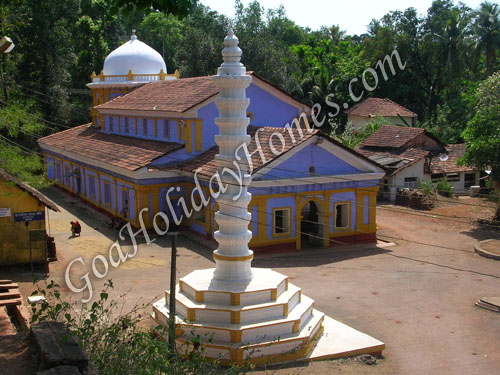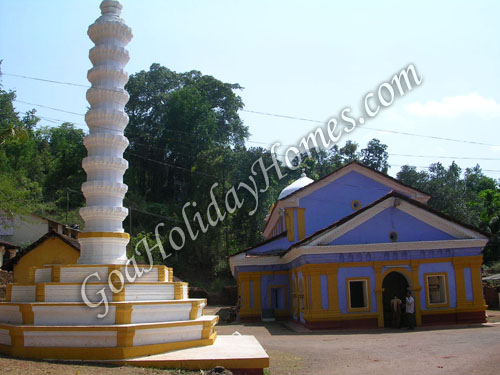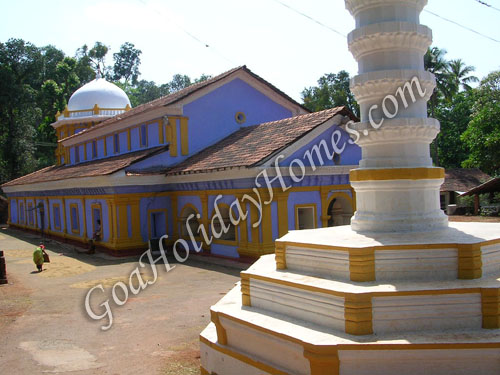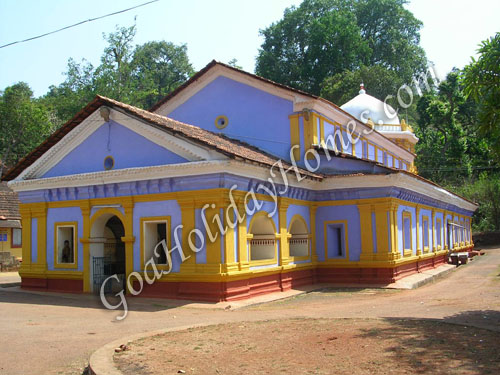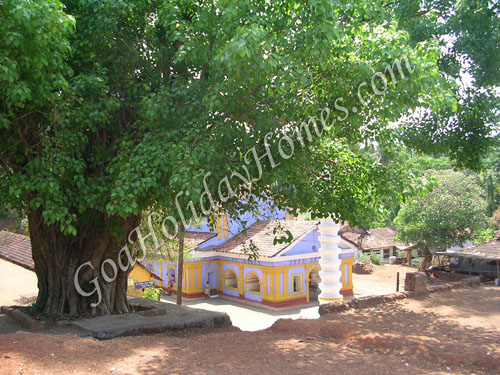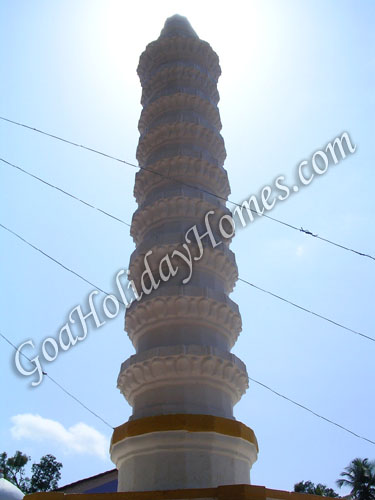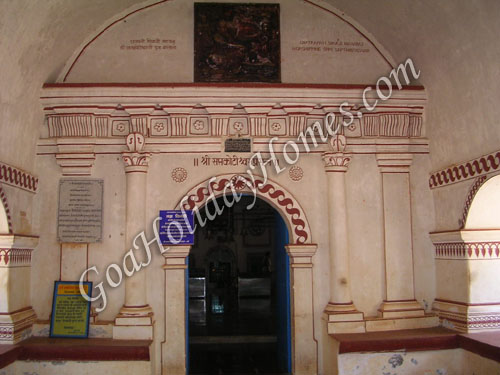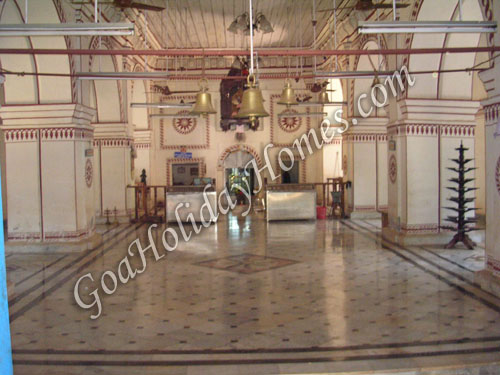Sri Saptakoteshwar Temple
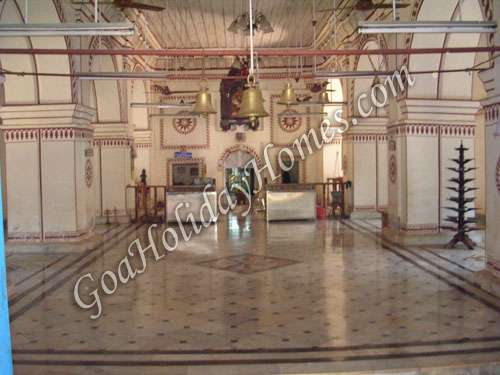
The Saptakoteshwar Temple in Goa which was originally situated at Divar is located at Narve in Bicholim which is 37 kms from Panjim. The frequent raids on Goa in the 14th Century mostly by the Sultans of Delhi and the Bahmanis, was one of the main reasons for the destruction of Hindu temples in Goa. These powers had eventually occupied the Konkan in 1532.
Fearing destruction to the temple due to Muslim rulers attacking Goa frequently, the linga from the temple was shifted and buried in a paddy field to avoid it from being destroyed, and was later reinstalled back during the peaceful reign of the Vijayanagar empire.
The Saptakoteshwar Temple at Naroa was actually destroyed by the Portuguese during one of their invasions and the stone from the temple was used for the church building there. The remnants of the temple ruins are still visible in the chapel attached to the cemetery of the church of Nossa Senhora da Piedade or the Our Lady of Compassion Church at Divar.
The linga from the Saptakoteshwar temple was abandoned for quite a long period of time and was found near a well on the Divar island. It was used as a pulley for drawing the well water, the marks still distinct on the rope. The other side of the river bank was annexed by an ally of the Sultan of Bijapur, this chieftain played an important role in the rehabilitation of the linga on the river bank that was visibly hidden amidst a narrow valley. This village assumed the name of Nae Naroa, and now is popularly known as Naroa or Bicholim.
A new temple was born from an incident during Shivaji's reign. In 1664 when Shivaji (who had gone to offer prayers to the linga placed in a mud & thatch house) found a straw from the thatch roof fallen on his shoulder he immediately took it as a good omen and ordered the construction of the temple. It is built based on the typical contemporary Goan architecture, with only the lamp tower design being of a distinct variety. The linga itself is distinctive of a 'daralinga' type and made of polished tone.
The Saptakoteshwar temple has a small entrance hall with bells. The main five pillared hall is decorated with arches and is intricately painted with chandeliers glorifying the beauty of the ceiling while the sanctorum wall is made of plain wood. The presence of ancient 'aggarshalas' can be demonstrated from the fact that there are ruins of an arched crumbling structure behind the main temple. The popular festival of Lord Krishna, 'Gokul Ashtami' is celebrated here every year.
The trip to this temple is made worthwhile mainly due to its pleasant surroundings and magnificent setting. The detour back can be well used to visit the original site of the newly built Saptakoteshwar temple and the church of Nossa Senhora de Piedade on the Divar Island. There is another road from here which leads to the Mayem Lake.

